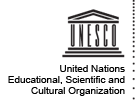In the Dominican Republic freedom of expression, press freedom and other related media issues are protected by different laws. There are many traditional and new media outlets for such a small country (and a Small Island Development State) but ownership of media is highly concentrated within a few privileged politic and economic powerful groups. This limits the diversity of media content and confines the views and topics covered by media to private interests. In 2010, the former Dominican President, Leonel Fernández, formed a national commission that prepared 5 law projects to reform or...
Regions: Latin America and the Caribbean
The Curaçao media landscape can best be described as rich. It is rich in the sense that there is an overwhelming amount of media for such a small island. Two daily newspapers La Prensa and Amigoe are most popular. There is a government run television station TeleCuraçao which provides information and entertainment. Three radio stations Radio Hoyer, Easy FM and Dolfijn FM serves the island country with its coverage. Social media and citizens’ media are quite active and vibrant in the country and provide much needed boost in democratic participation of the citizens. However, there is an...
Jamaica has a vibrant radio media sector with twenty stations offering service, the majority being nationwide offering vast selections of music, phone in programmes and news. The sector is highly competitive, but driven by the dictates of the advertisers. The specific needs of communities driving development are only catered for by three radios, including Jet FM which serves rural Jamaica. Jeffrey Town Farmers Association, (JTFA) set up and launched Jet FM in 2008, and has been recognized as one of the best in Caribbean for its efforts at community development using media and recognized by...
The Caribbean has a varied level of media development, with Trinidad and Jamaica being the most sophisticated and Dominica and Guyana the least. This is a function of internal capacity and reflects in the local content production, quantitatively and qualitatively. The Caribbean TV landscape is almost totally dominated by imported U.S. Television, and there is also a clear and urgent need for production capacity building for both men and women producers in order to foster greater capability for the region to develop more in the area of freedom of expression.
Two of the main...
On May 16th 2012, Brazil saw its Freedom of Information Law come into force. The text, approved by the Brazilian Congress after intense advocacy by civil society (mainly Abraji and the Right of Access to Public Information Forum), is one of the most comprehensive of the world. It includes municipalities, states and federal government and involves Judiciary, Executive and Legislative aspects. According to the text, most information must be made public in the Internet in computer-friendly format. The text also details the few exceptions to the new general instruction of transparency. But in...
The media are essential to implementing the public information laws, enabling citizens to have a better knowledge of the current legislation, but they are also a tool for the exercise of journalistic activity in its role as watchdog of state institutions. Although Uruguay has an acceptable level of media development –considering its number of commercial, community and state radio stations and the number of existing newspapers- the same cannot be said about the diversity and plurality of the country’s media system as a whole. Among audiovisual media, private supply is thoroughly predominant...
In this age of information, the processes of production, circulation and consumption of information, are leaving the unidirectional broadcasting logic and are radically transformed by the development of a decentralized network. In this context of disintermediation, it is essential to understand and adapt to the possibilities that new technologies bring to not continue reproducing obsolete communication models. It is a priority, then, to highlight the most favorable aspects of the adoption of ICTs and encourage uses that contribute to strengthening the fulfillment of human rights, such as...
Media and broadcasting institutions in Bolivia (at least 15 with national reach) are concentrated in two conglomerates : private corporations and state-owned media. Though community media has increased in number, it hasn’t yet developed the capacity to create independent content. This means that although there appears to be a wide diversity of media, the content production is reduced to a small group of journalists. This scenario restricts the exercise of freedom of the press and threatens the public’s right to access quality information. This situation is aggravated by the fact that...
Colombia is a country that has had almost 60 years of internal armed conflict, as a result of inequalities, exclusion of broad strata of the population and weakness of the State. The country has been controlled by powerful groups (such as private corporations, national elites, wealthy families, etc.), which has resulted in widespread violence with many expressions and multiple stakeholders. This has negatively affected the economy and the country’s development, causing high rates of poverty and inequality. The nation spends heavily on security and defense, to the detriment of funding for...
Peru has about nine million indigenous citizens, who speak 43 different languages. However, there are high rates of extreme poverty among the indigenous population and they suffer constant violations of their fundamental rights. In this context, timely access to information is a means for these peoples’ progress and integrated development. Indigenous communication makes sense when practiced within the framework, world-view, language and culture of each native community, so the indigenous peoples themselves must produce, manage and disseminate information on their peoples in the media –...
